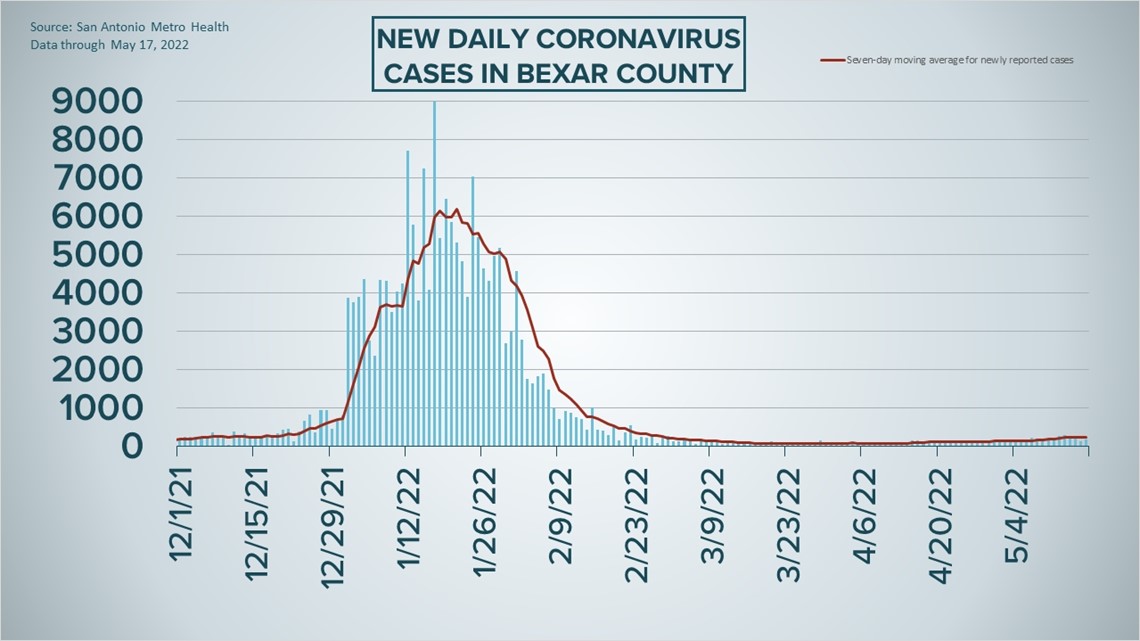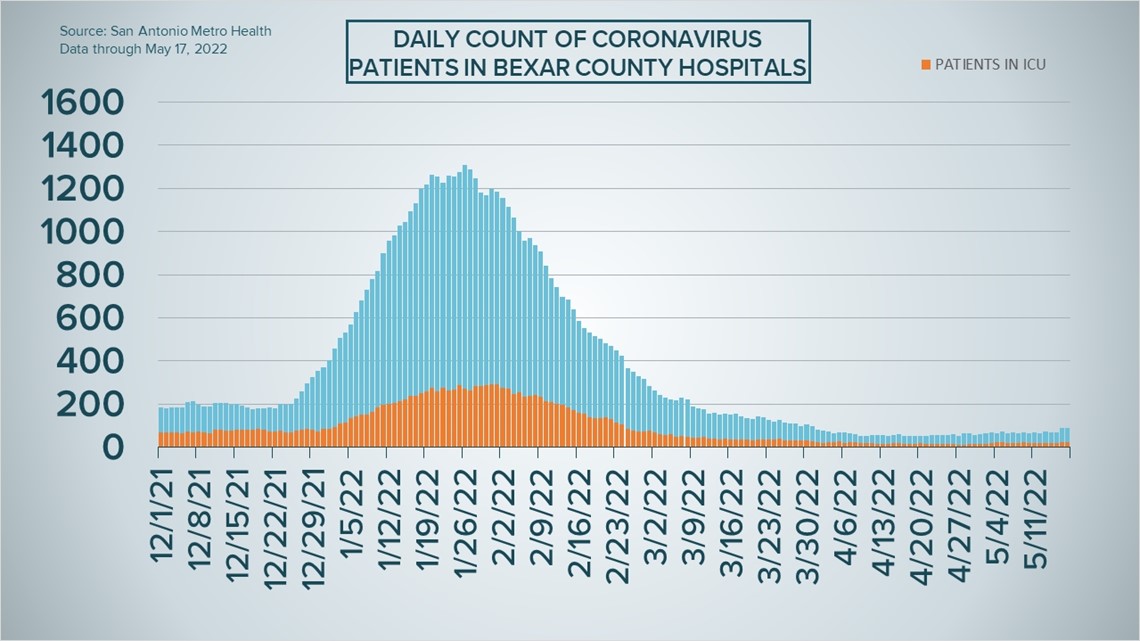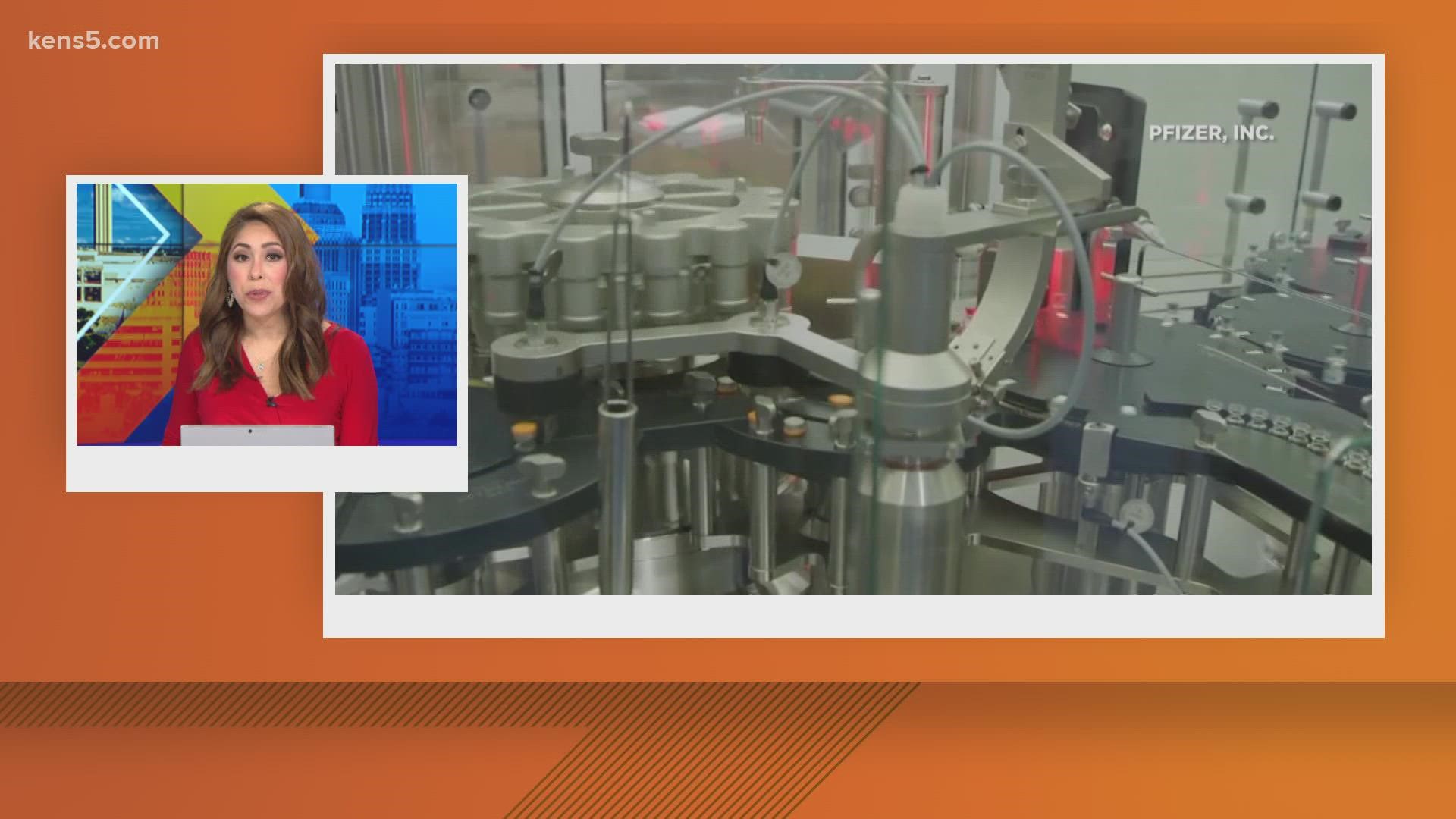SAN ANTONIO — Bexar County health officials indicated the local risk for COVID-19 spread remained at "low" but "worsening" Tuesday as hospitalizations rise and May sees a slight increase in new infections.
Another 175 cases were reported Tuesday, and May has brought an average of 182 new diagnoses a day so far; that's almost twice as many as the average of 96 new daily cases for the San Antonio area in April.
Meanwhile, local coronavirus hospitalizations have jumped in recent days. There were 90 patients hospitalized with symptoms Tuesday, up from 71 on Friday. Of those 90 patients, 22 are in intensive care and nine are using ventilators.
No new deaths have been reported since last week, however. Nearly 543,000 Bexar County residents have been diagnosed with COVID-19.
How Bexar County is trending




Vaccine Progress in Bexar County
The following numbers are provided by San Antonio Metro Health. A full breakdown can be found here.
- 1.449 million eligible Bexar County residents are fully vaccinated as of Monday, May 9.
- More than 516,000 eligible Bexar County residents have received their COVID-19 booster shot, as of Monday, May 9.
The CDC states that "when a high percentage of the community is immune to a disease (through vaccination and/or prior illness)," that community will have reached herd immunity, "making the spread of this disease from person to person unlikely."
The City of San Antonio breaks down the vaccination rates by zip code on Metro Health's Vaccination Statistics page.
Coronavirus in Texas
The total number of coronavirus cases in the state since the pandemic began grew by 3,215 on Tuesday, according to the Texas Department of State Health Services. That total includes 2,180 new confirmed cases and 1,035 new probable cases. More details can be found on this page.
Tuesday's figures bring the total number of Texans diagnosed with COVID-19 to more than 6.79 million.
An additional 10 Texans have died from virus complications, meanwhile, raising the statewide death toll to 86,723.
Coronavirus symptoms
The symptoms of coronavirus can be similar to the flu or a bad cold. Symptoms include fever or chills, cough, shortness of breath or difficulty breathing, fatigue, muscle or body aches, headache, new loss of taste or smell sore throat, congestion or runny nose, nausea or vomiting, and diarrhea, according to the Centers for Disease Control.
Most healthy people will have mild symptoms. A study of more than 72,000 patients by the Centers for Disease Control in China showed 80 percent of the cases there were mild.
But infections can cause pneumonia, severe acute respiratory syndrome, kidney failure, and even death, according to the World Health Organization. Older people with underlying health conditions are most at risk.
Experts determined there was consistent evidence these conditions increase a person's risk, regardless of age:
- Chronic kidney disease
- COPD (chronic obstructive pulmonary disease)
- Obesity (BMI of 30 or higher)
- Immunocompromised state (weakened immune system) from solid organ transplant
- Serious heart conditions, such as heart failure, coronary artery disease, or cardiomyopathies
- Sickle cell disease
- Type 2 diabetes
- The CDC believes symptoms may appear anywhere from two to 14 days after being exposed.
Human coronaviruses are usually spread...
- Between people who are in close contact with one another (within about 6 feet).
- Through respiratory droplets produced when an infected person coughs, sneezes or talks. These droplets can land in the mouths or noses of people who are nearby or possibly be inhaled into the lungs.
- Some recent studies have suggested that COVID-19 may be spread by people who are not showing symptoms.
Help stop the spread of coronavirus
- Stay home when you are sick.
- Eat and sleep separately from your family members
- Use different utensils and dishes
- Cover your cough or sneeze with your arm, not your hand.
- If you use a tissue, throw it in the trash.
Find a Testing Location
City officials recommend getting a COVID-19 test if you experience fever or chills, cough, shortness of breath or difficulty breathing, fatigue, muscle or body aches, headache, new loss of taste or smell, sore throat, congestion or runny nose, nausea or vomiting, or diarrhea.
Here's a Testing Sites Locator to help you find the testing location closest to you in San Antonio.
Latest Coronavirus Headlines
- Pfizer's COVID-19 boosters for kids 5 and up get emergency use authorization from FDA
- Biden offering additional 8 free COVID-19 tests to public
- 1 million COVID deaths in US put into perspective
- Texas used federal aid meant for coronavirus relief to offset costs of controversial border mission
- South Africa in new surge of COVID from versions of omicron
- North Korea reports 6 deaths after admitting COVID-19 outbreak
- Workers grapple with new stresses as they return to office

